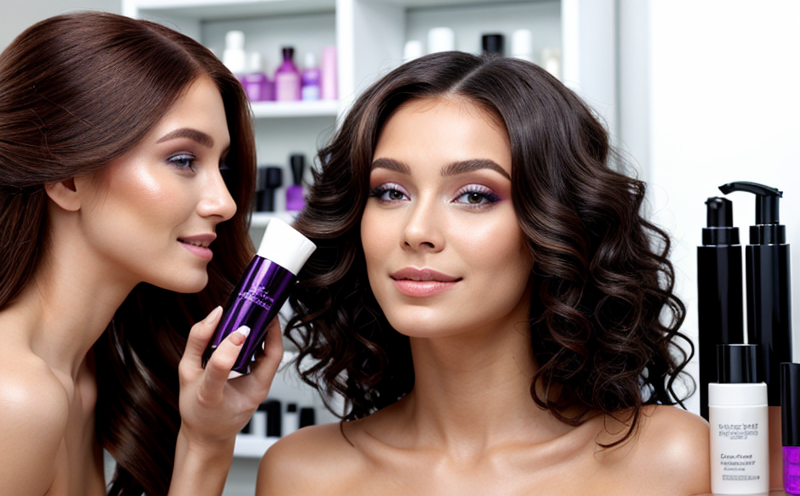Anti-Oxidant Efficacy Testing in Hair Serums
Anti-oxidant efficacy testing is a critical process in the development and quality assurance of hair serums. This ensures that products are effective at combating oxidative stress, which can lead to hair damage and aging. The primary goal of this test is to evaluate how well an antioxidant ingredient protects hair from free radical damage.
Free radicals are unstable molecules that can cause cellular damage when they react with other molecules in the body. In hair care products, these reactions can weaken the hair shaft, leading to breakage and loss of elasticity. Anti-oxidants neutralize these free radicals by donating an electron without becoming a radical themselves, thus preventing further oxidative stress.
The testing process involves several steps including sample preparation, application of the serum onto standard test specimens such as human hair strands, incubation under controlled conditions to simulate real-world usage, and finally, analysis using various analytical techniques. These might include spectrophotometric measurements or electron spin resonance (ESR) spectroscopy.
Once tested, results are compared against industry standards like ISO 21564:2013 which provides guidelines for measuring the oxidative stability of cosmetic products containing antioxidants. Compliance with these standards ensures that consumers receive safe and effective hair care solutions.
| Parameter | Description |
|---|---|
| Sample Preparation | The preparation method varies depending on the type of serum but typically involves diluting the product with a suitable solvent before testing. |
| Incubation Conditions | This could range from room temperature to higher temperatures, depending upon expected use conditions and desired outcome. |
| Analytical Techniques Used | Spectrophotometry or ESR Spectroscopy may be employed to measure changes in oxidation levels over time. |
The importance of this testing cannot be overstated. It helps manufacturers ensure their products meet regulatory requirements while also providing consumers with high-quality, effective hair care options. By focusing on anti-oxidant efficacy, labs like ours help create safer and more beneficial products for everyone involved.
Benefits
The benefits of conducting anti-oxidant efficacy testing extend beyond just compliance; it offers tangible advantages to both manufacturers and consumers alike. For companies, it provides valuable data that can inform product development decisions, improve formulation processes, and enhance overall brand reputation.
For customers, these tests mean better quality products with longer shelf life and improved effectiveness against common hair issues such as dryness or split ends. Additionally, knowing the efficacy of anti-oxidants in preventing oxidative stress gives peace of mind regarding product safety and performance.
Industry Applications
| Application | Description |
|---|---|
| Balms and Conditioners | Used to protect against environmental stressors like UV rays. |
| Hair Masks | Offer deep conditioning benefits alongside antioxidant protection. |
| Sunscreen Formulations | Incorporate antioxidants to shield hair from UV damage during extended sun exposure. |
Use Cases and Application Examples
One notable application example is in the formulation of a new line of sun protection serums designed specifically for individuals with fine, damaged hair. By incorporating potent antioxidants into these products, manufacturers aim to provide comprehensive coverage from both UV radiation and internal oxidative stressors.
A second case study involves an established brand looking to enhance its existing range of conditioner products by adding a new anti-oxidant ingredient. Through rigorous testing, they discovered that this addition significantly improved the product's ability to maintain healthy hair over time.





